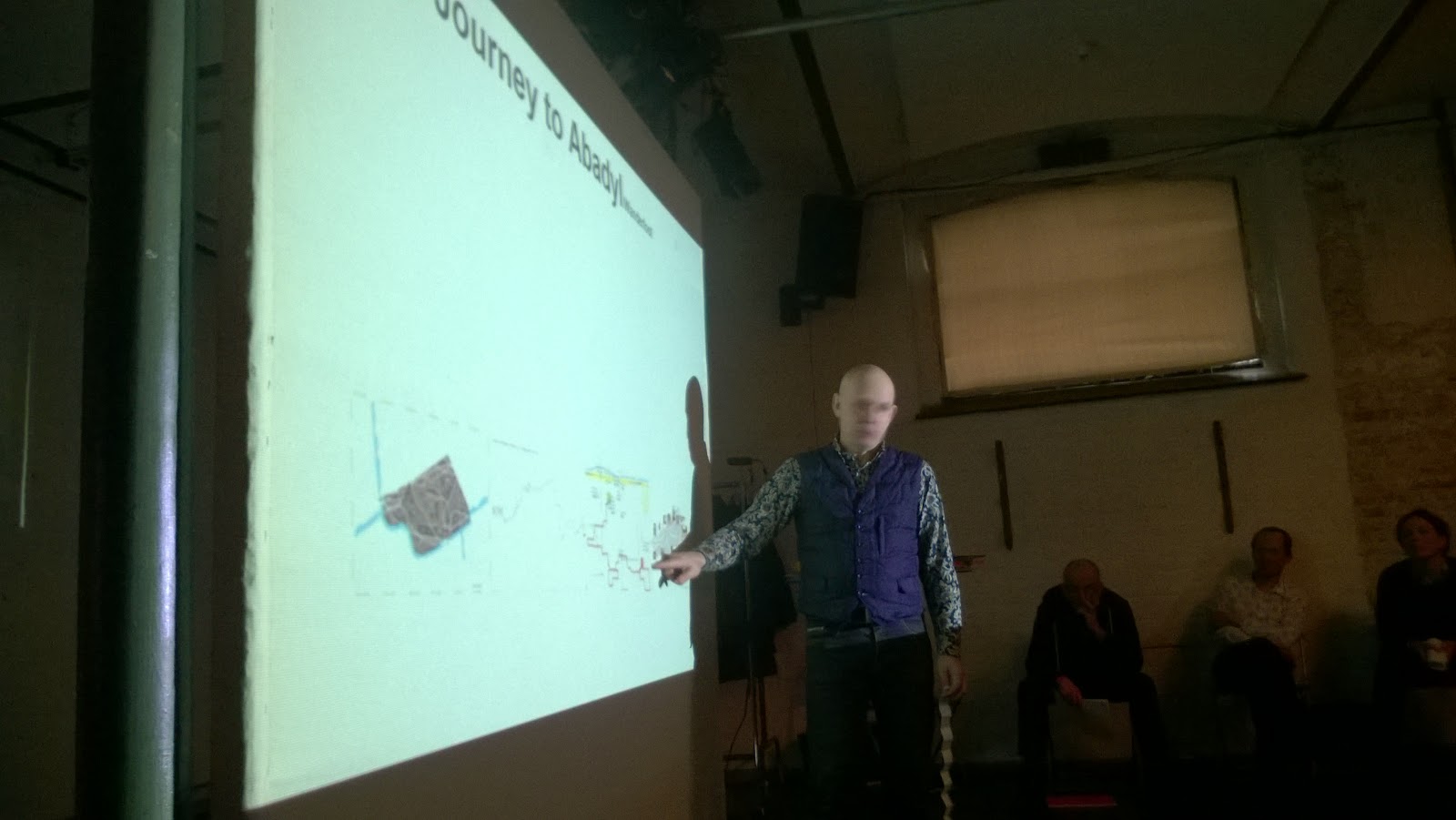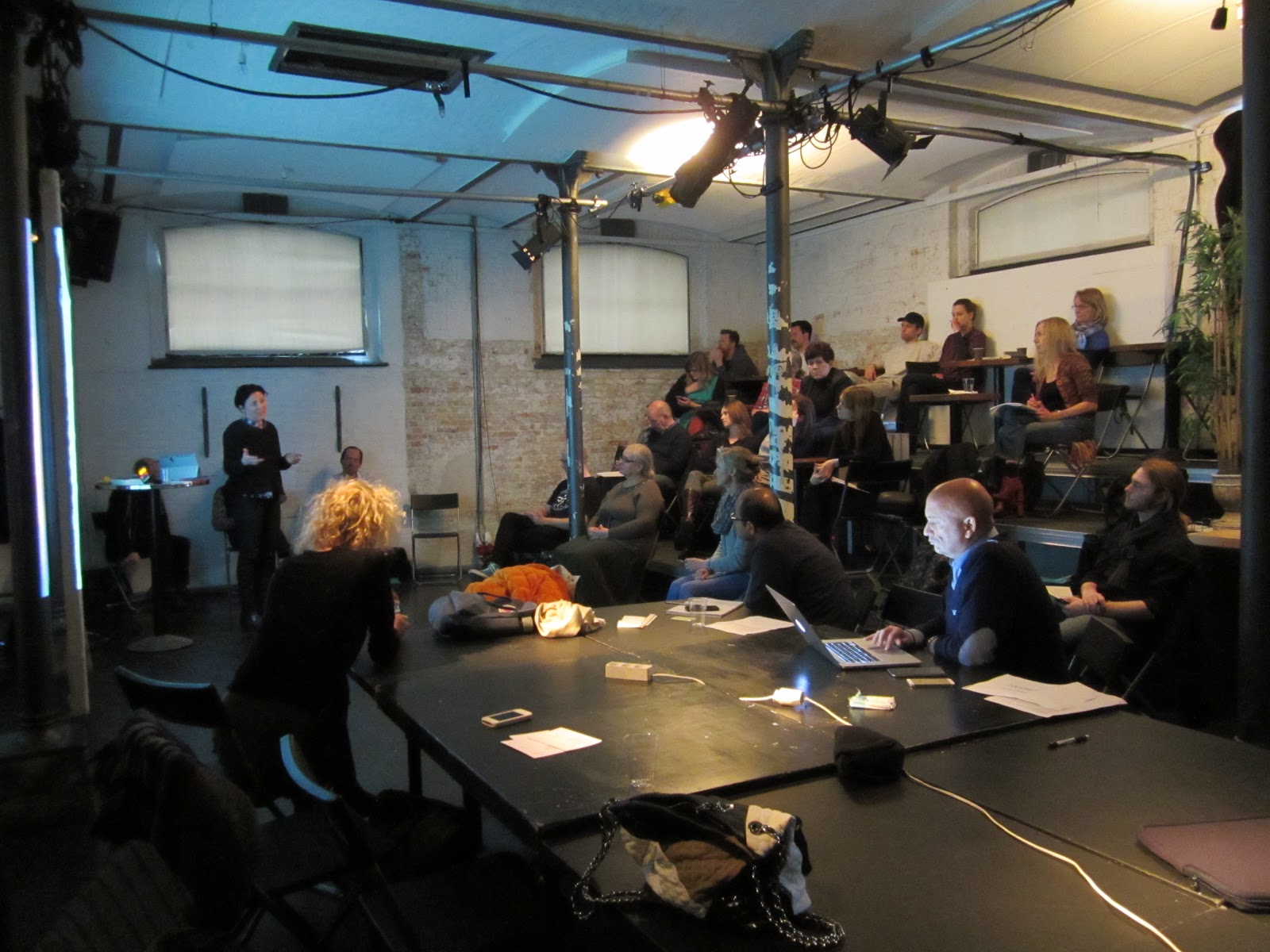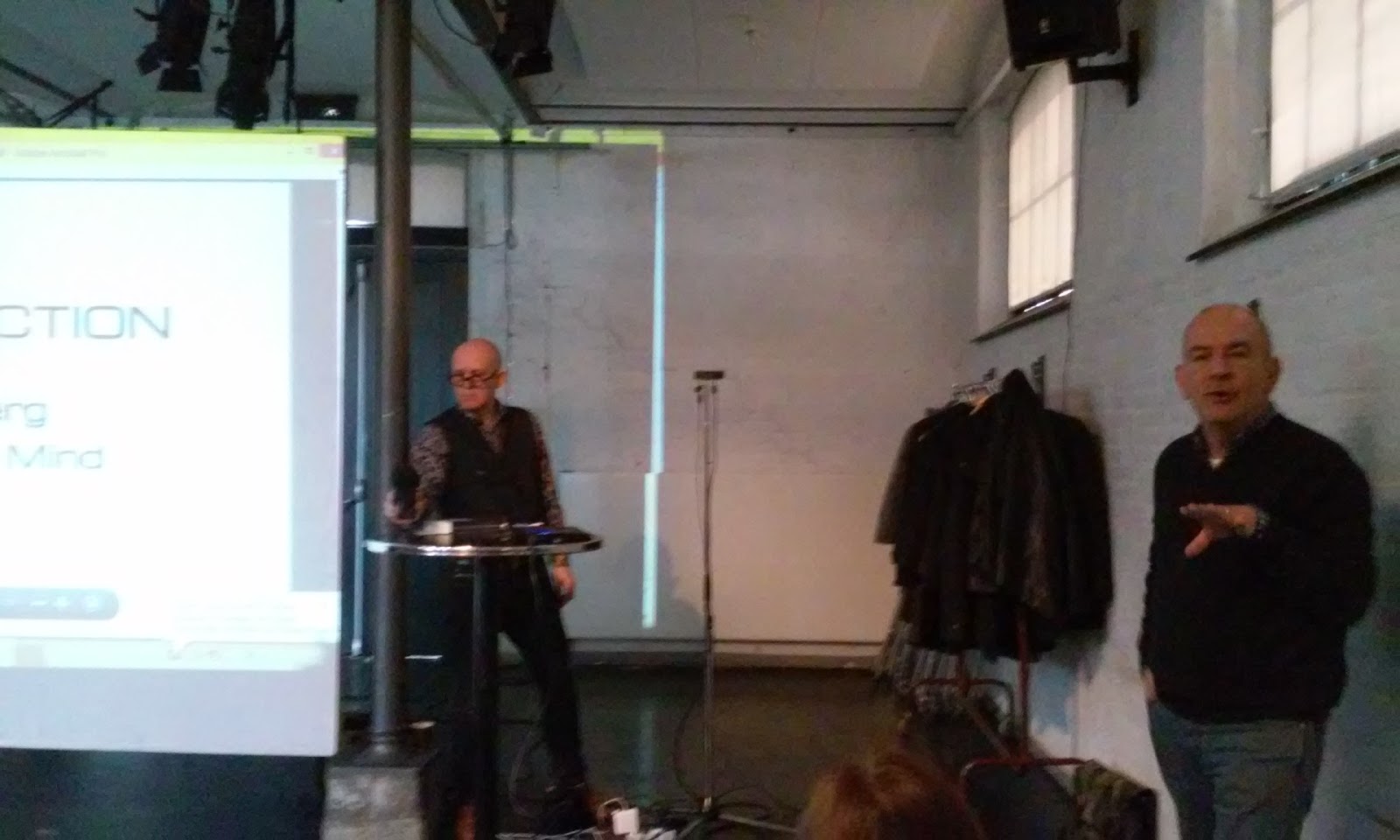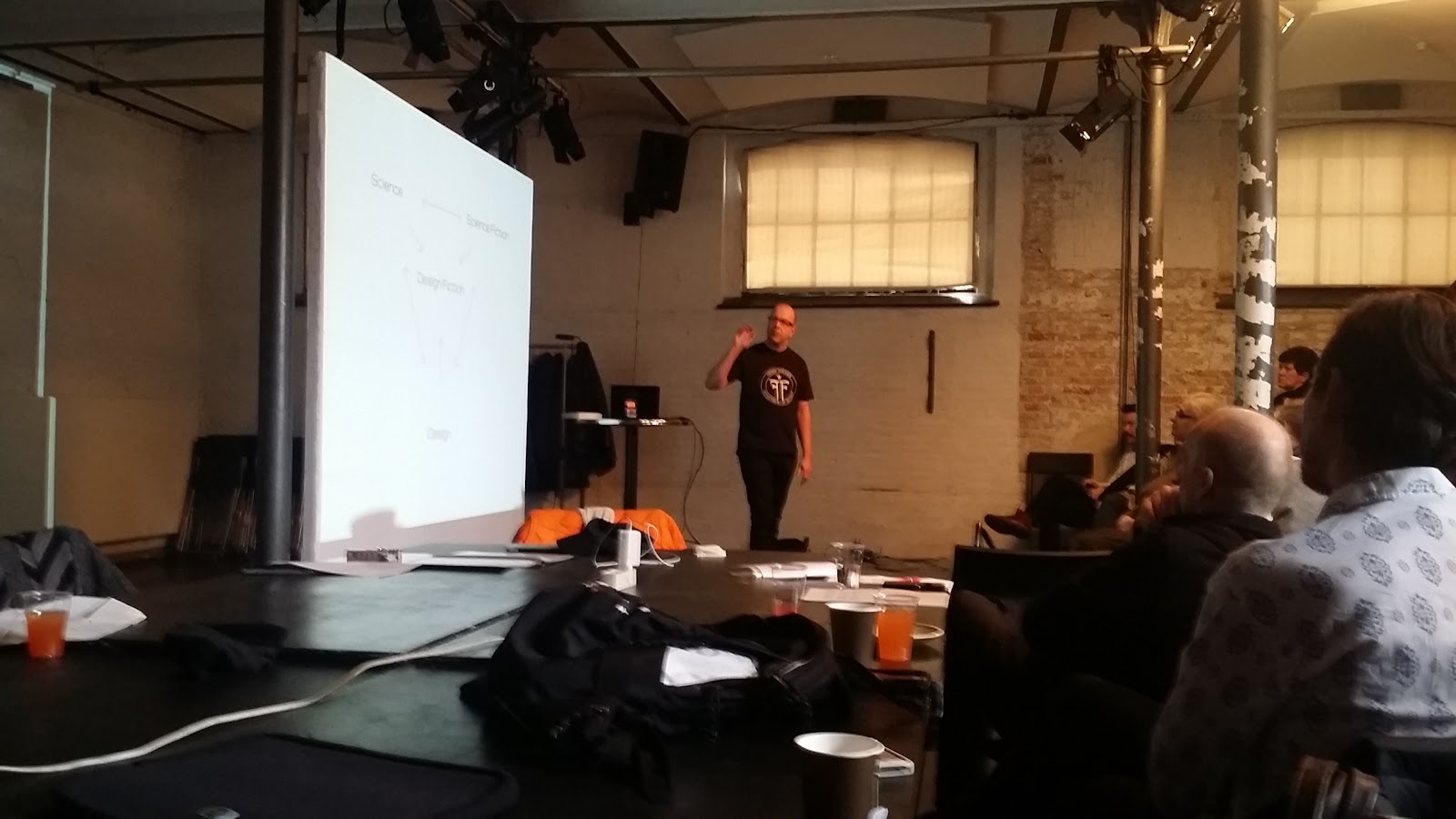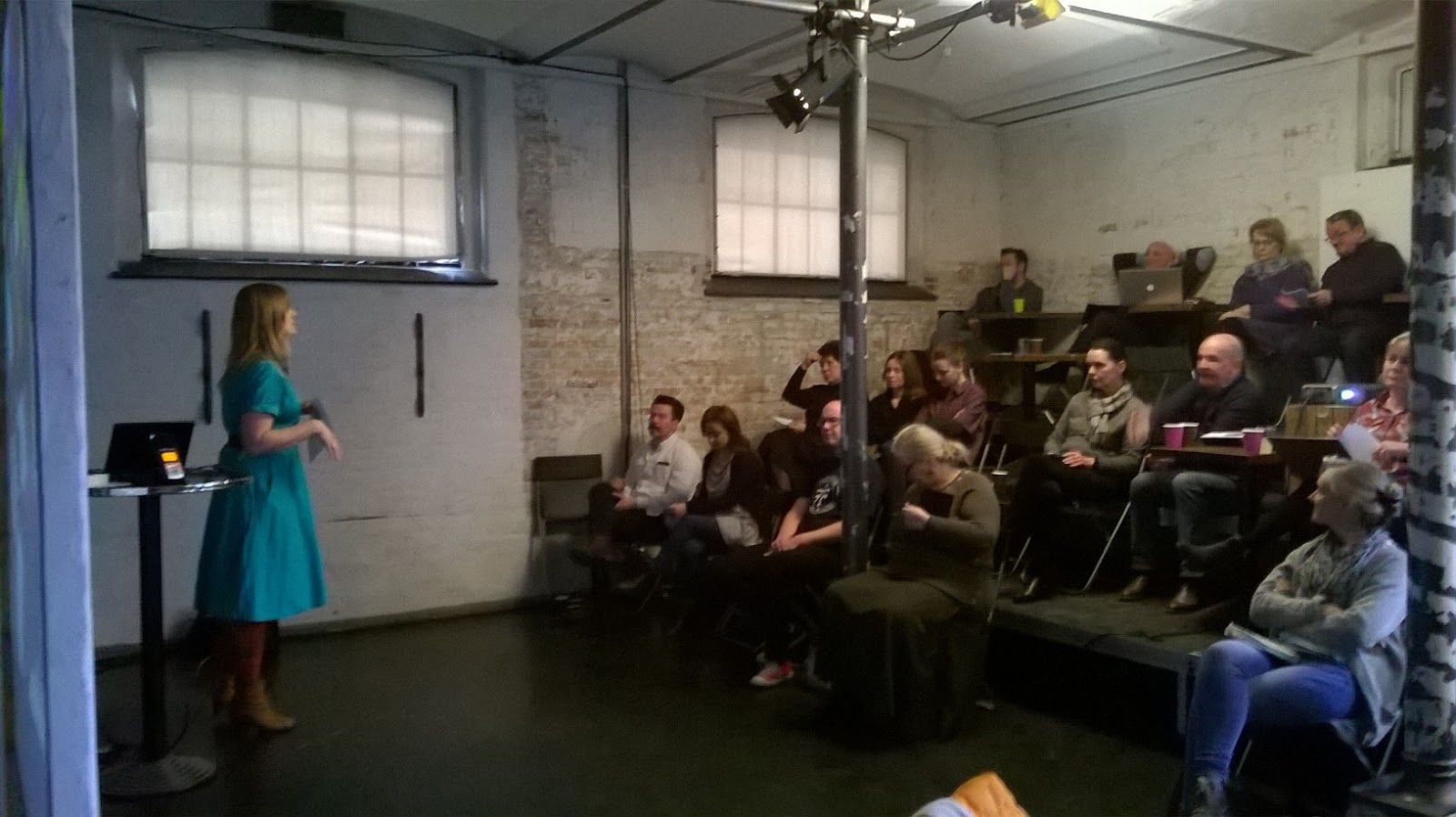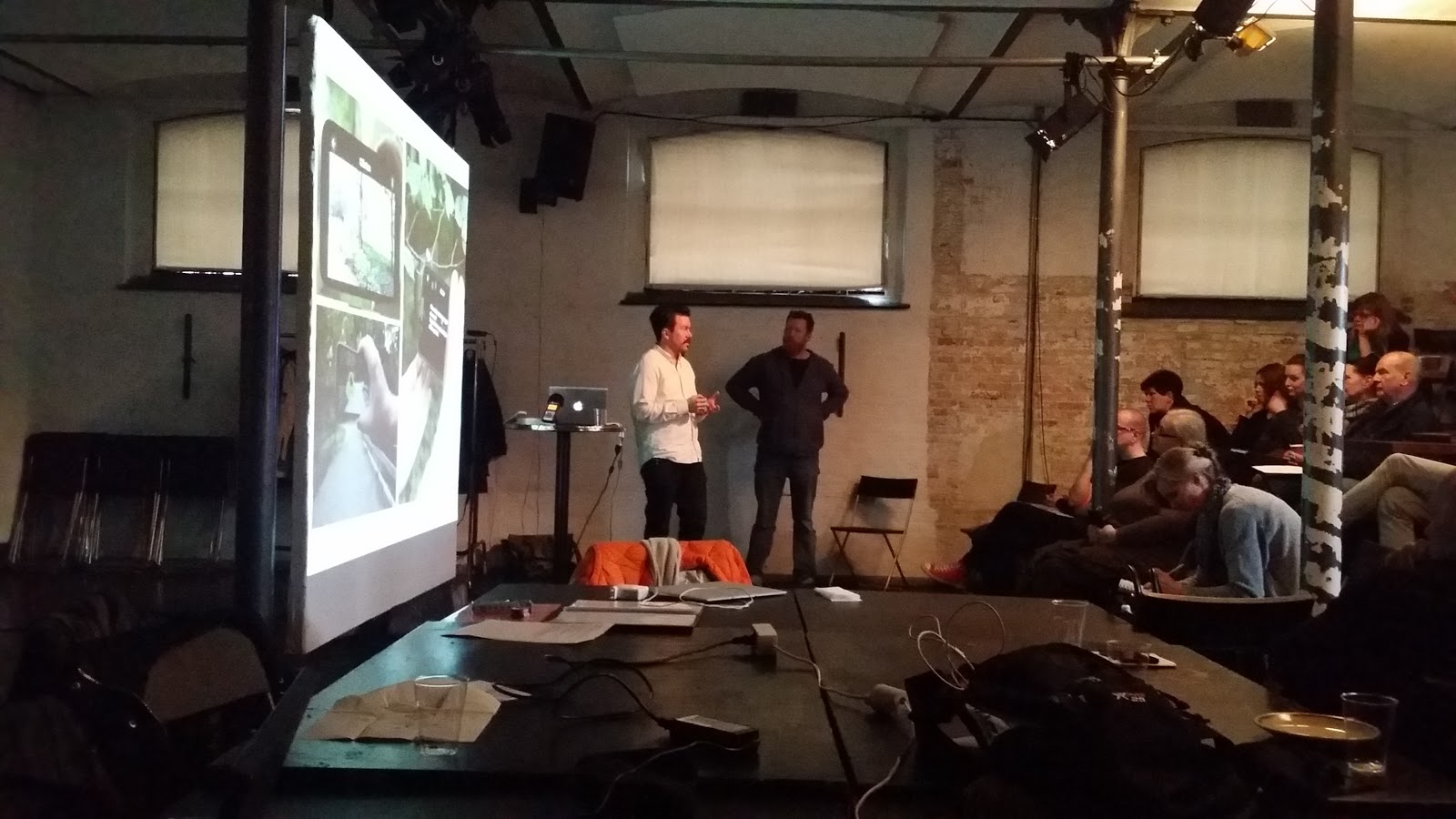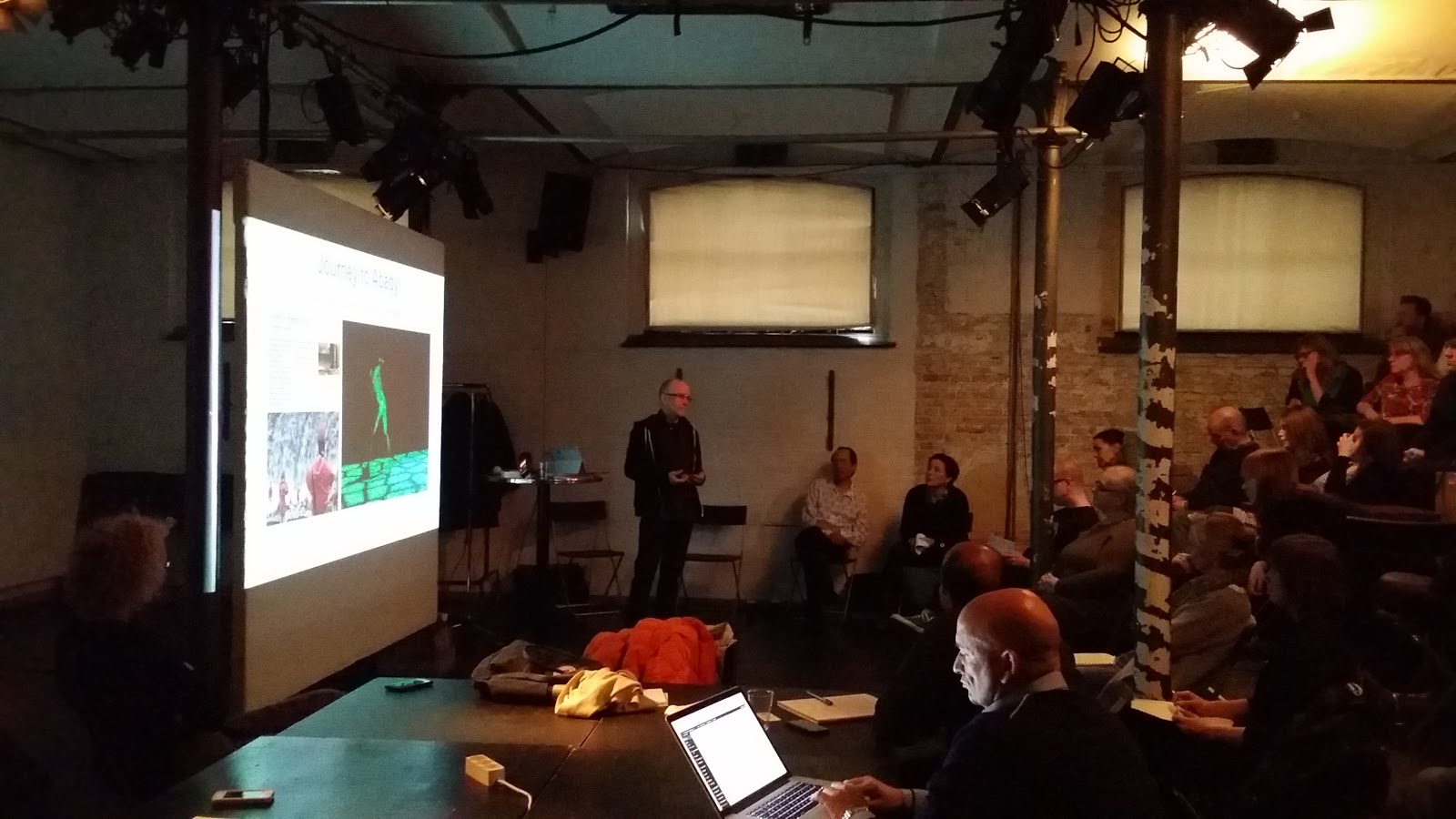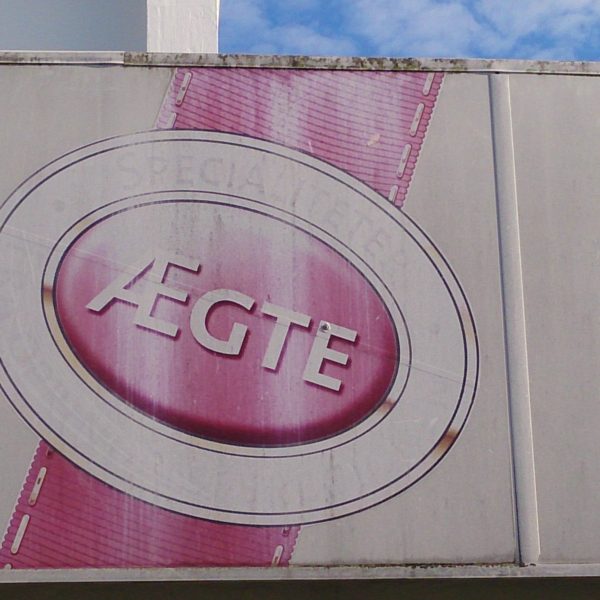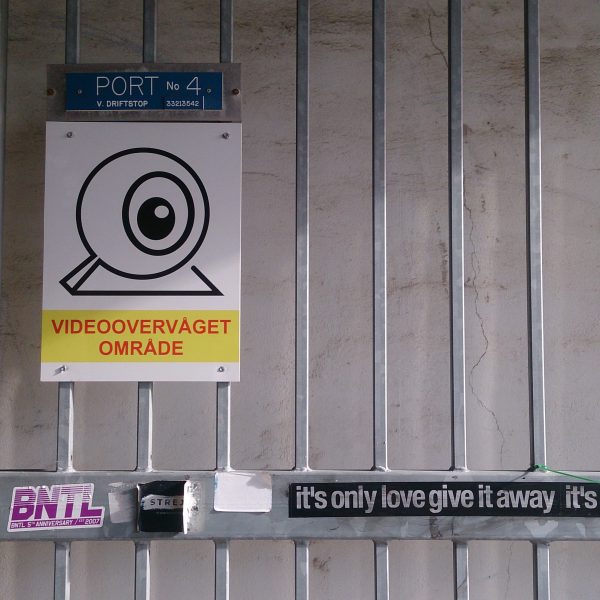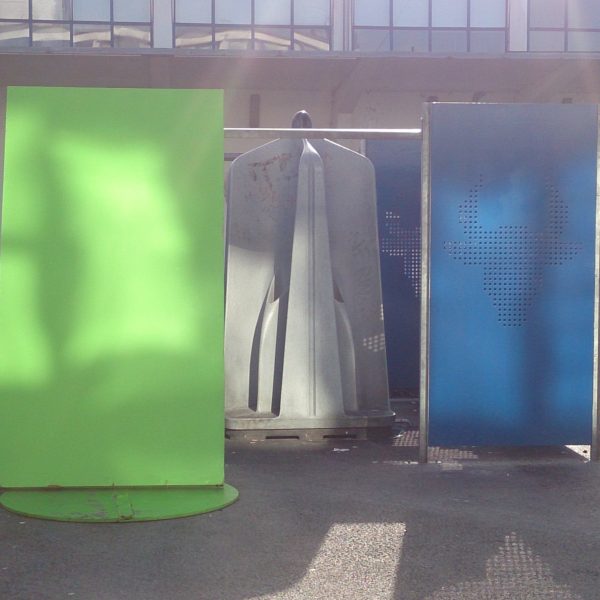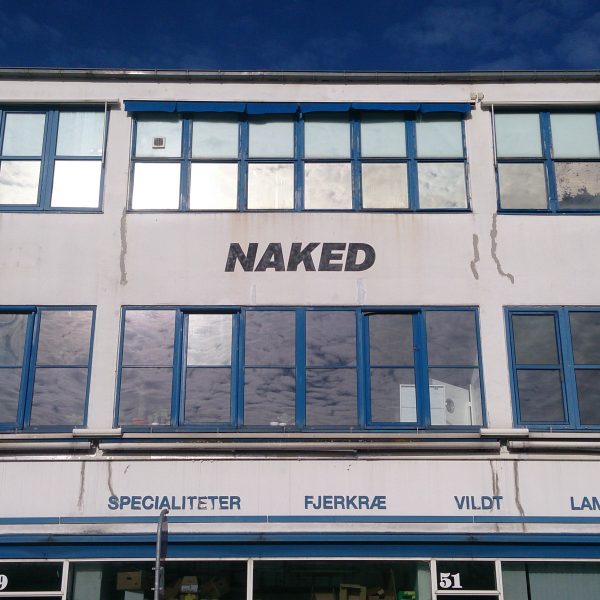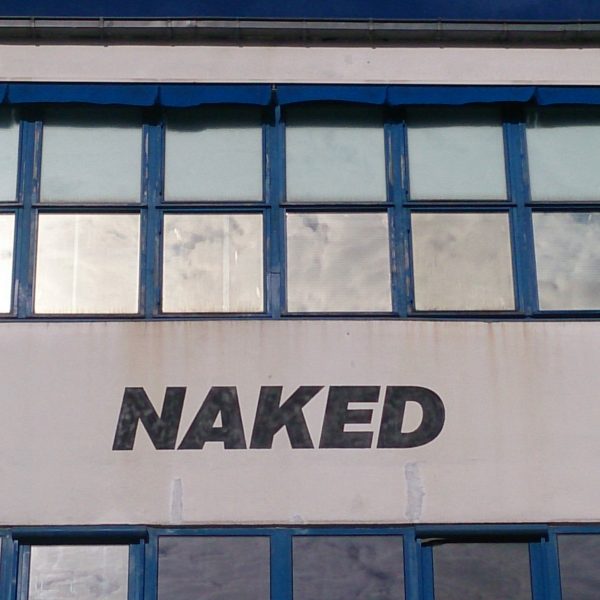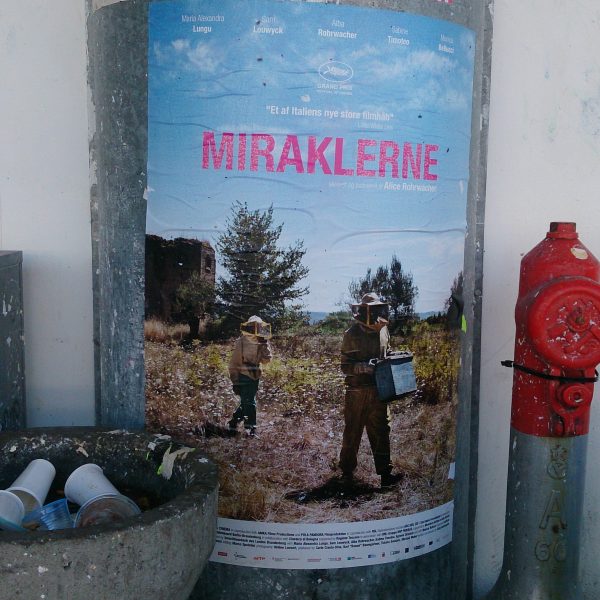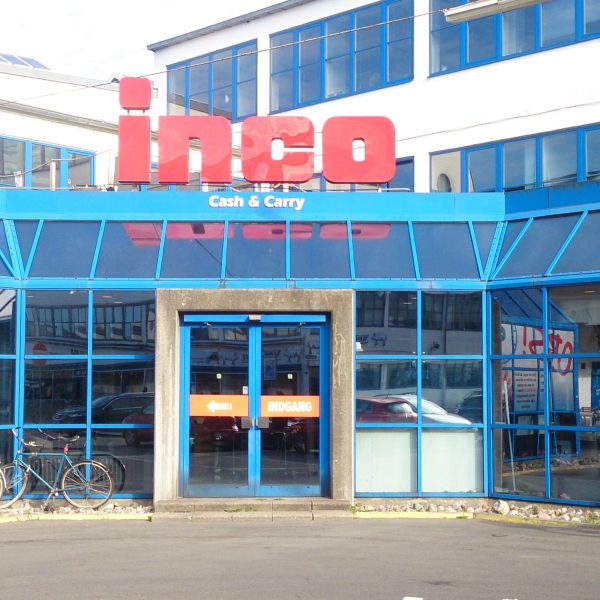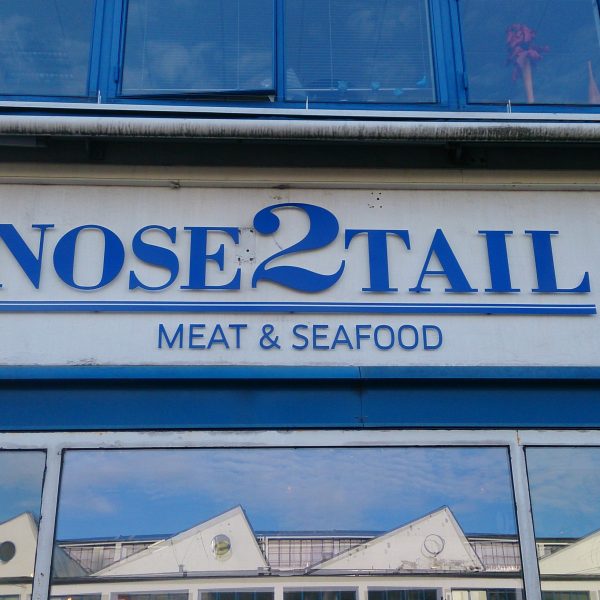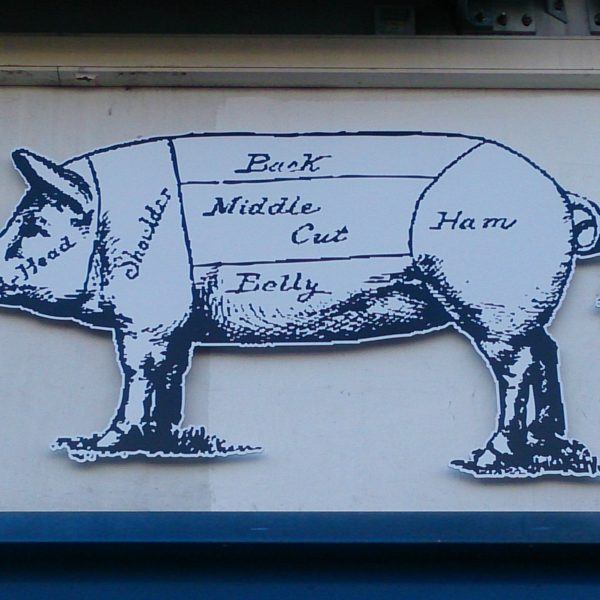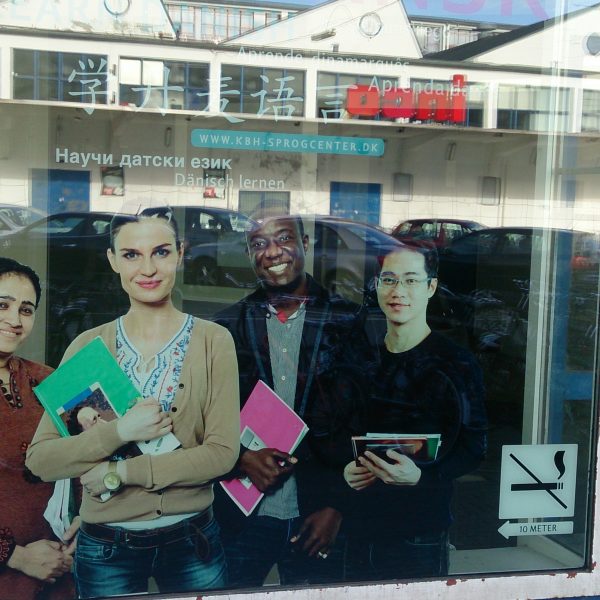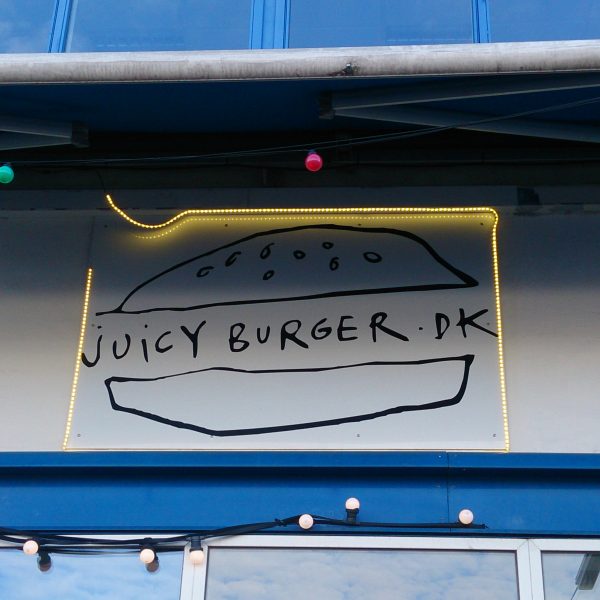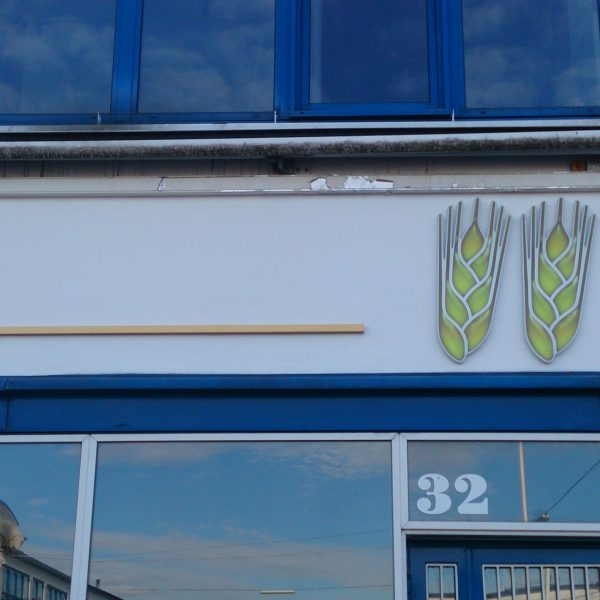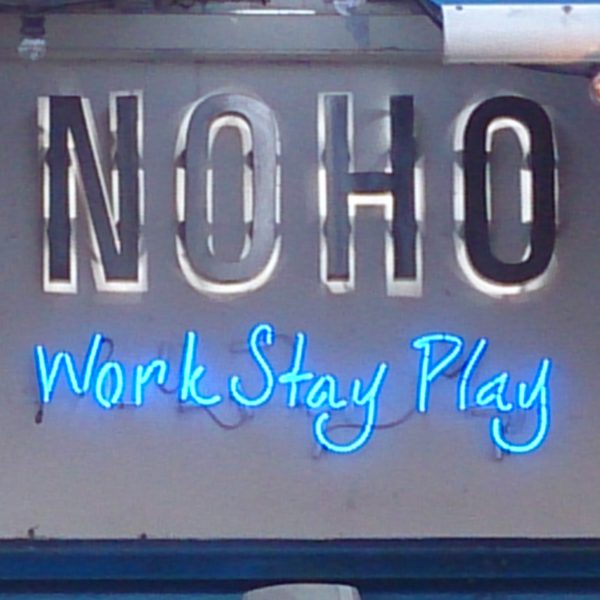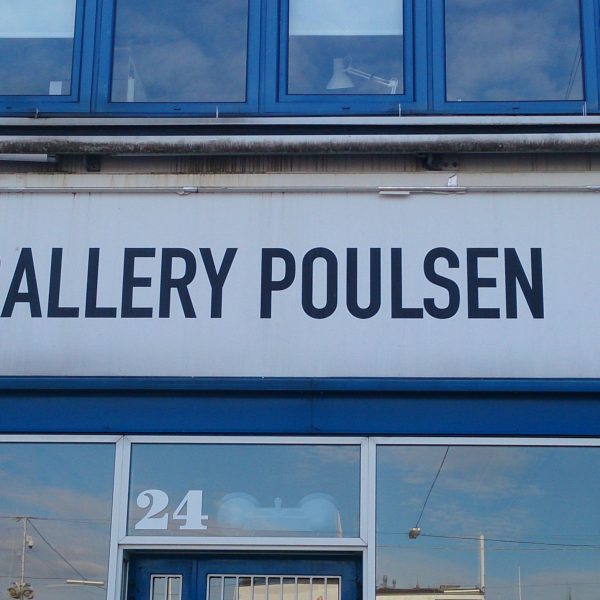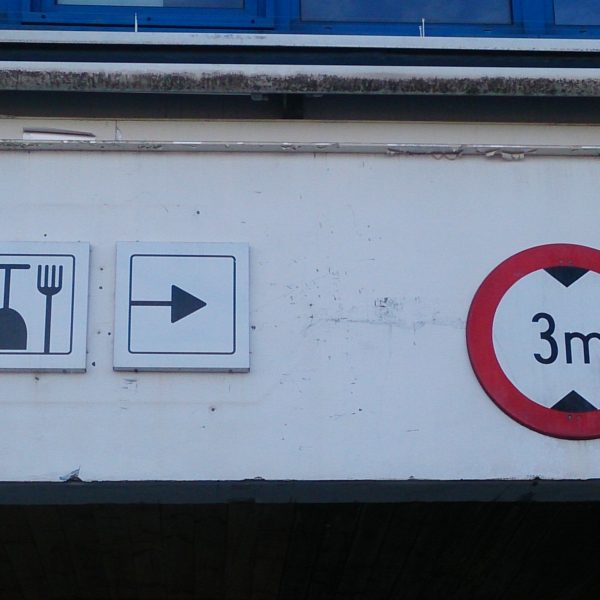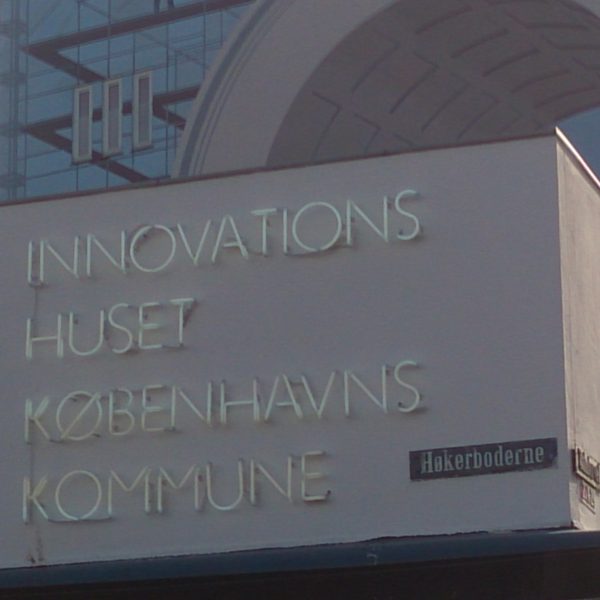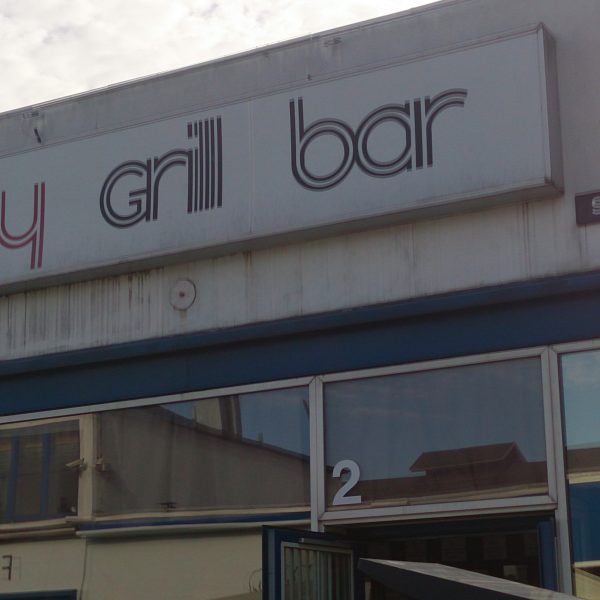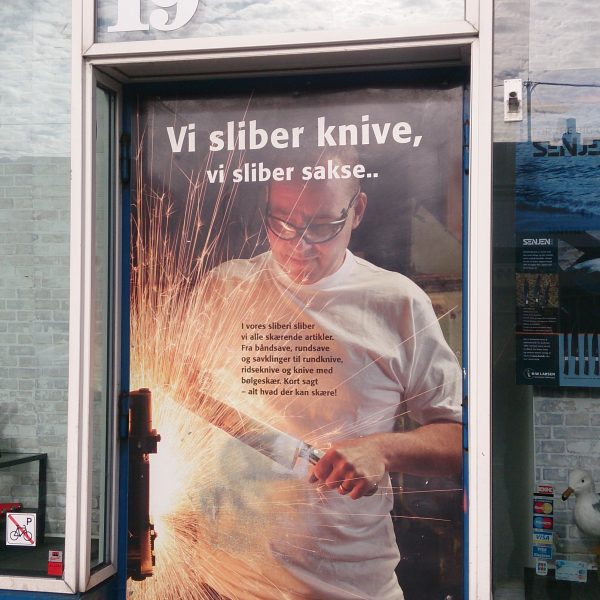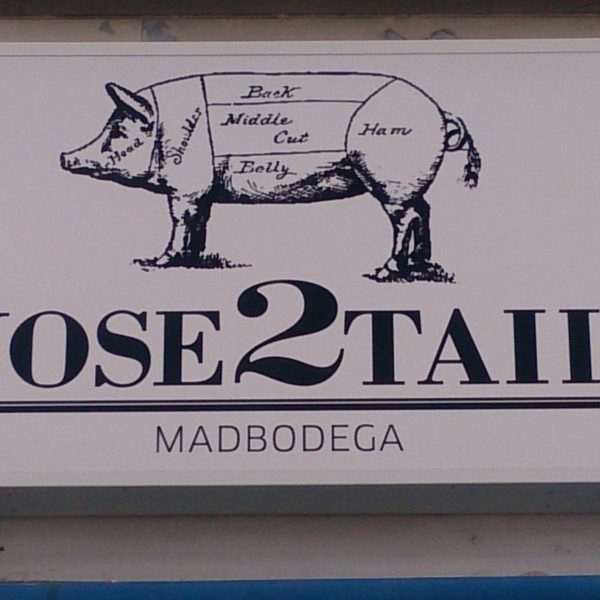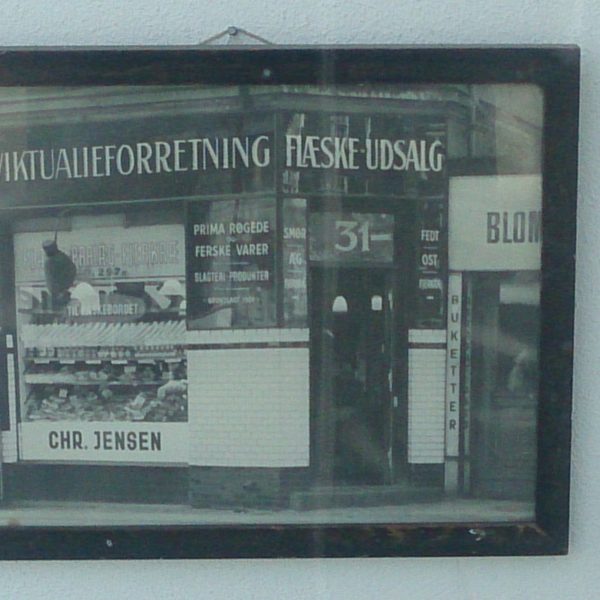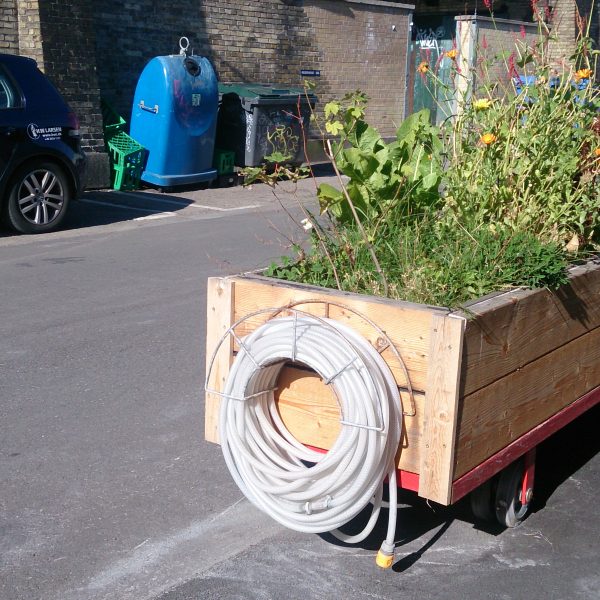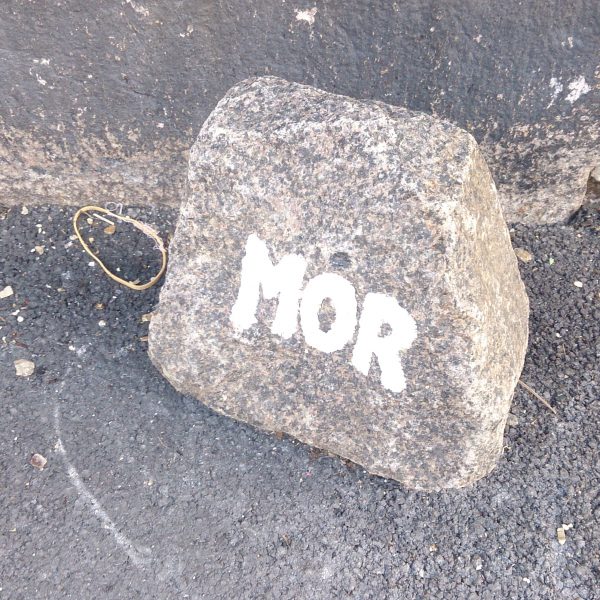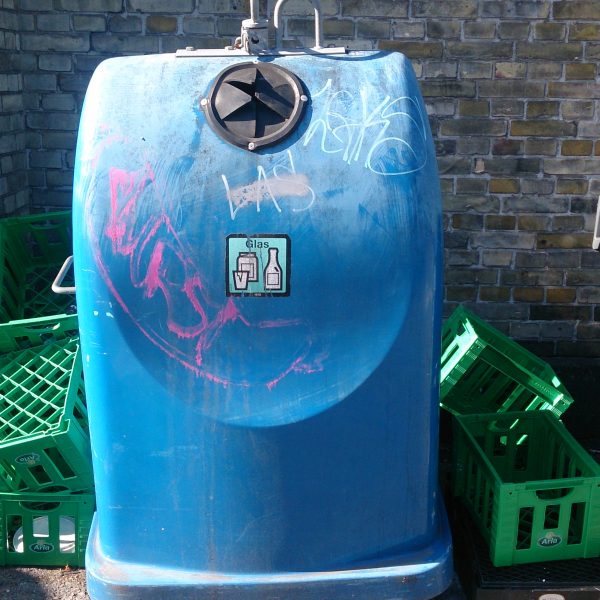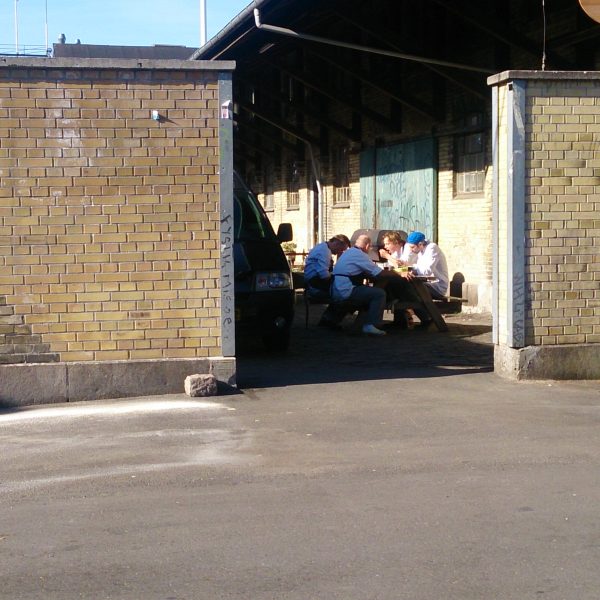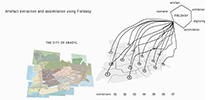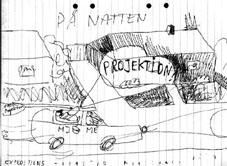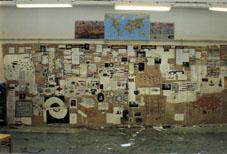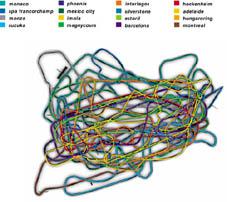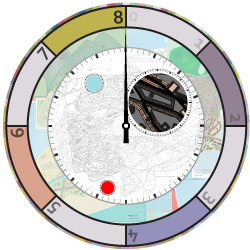Conversation China
Serendipity on a plate
Michael Johansson
Collaborative Media Lab
Kristianstad University
Sweden
ABSTRACT
In this article I will present and discuss the design thinking, methods, processes and some examples of work, that demonstrates how I together with different co-creators set up a work practice, using digital 3d objects and images. That in different ways and formats helps us to explore how a database, a set of rules can be used in a dialogue with artistic work practice and how such a process can be used to create images and animation in a variety of design and art projects. The main example is a project called Conversation China that still is in its making, here we work with rather complex processes, involving several digital analogue techniques as the basis for creating the images for a 150 pieces porcelain dinner set. My interest in this work is how the intention of the artist or designer is transferred and later embedded in the procedural or algorithmic process and how this intent is organized and set up to secure an desired outcome, mixing the possibilities of the digital media object with manual editing and artistic craftsmanship. What this article tries to put forward is how we designed and set up environments for working with non linear and procedural media, their different expressions and forms by using explorable prototypes and design thinking?
Keywords: Co-creation, 3d worlds, Design fiction, Human condition, Uncertainty, Storytelling, Worldmaking, Animation, Decorative Patterns, Porcelain
FOUR PROJECTS
Already in early 90´s when I worked with a Swedish company Advisors to improve visual representations in a virtual reality setting for cognitive therapy using advanced computer graphics system provided by Silicon Graphics and Softimage. I became familiar with the visual qualities and rendering techniques of virtual objects and 3d worlds. During these experiments I became interested in how to put together different 3d objects from a database into complex spacial configuration to improve the overall immersion and of the virtual world itself. In this process, errors in compiling the different objects created stunning visual results and led me into creating a system for randomly explore a limited database of 3d objects. The project was called VET, Vacuum Extropia Theory. The project was supported by the Swedish art council and presented at an exhibition. In VET the idea was by animation, cluster different 3d objects and use a virtual camera to automatically explore 3d environments and worlds, in theory, algorithms are repeatable and should produce identical results every time, but by stressing implementation and limitations of software and the computer itself I intentionally caused and looked out for errors and flaws that produce interested visual expressions.
- Image vsfär 197 from VET
Boom
At that time the tools still where very simple and the different outputs from the computer where limited. I could clearly see that the software I used, and still do could produce good visual results, but to achive the kind of complexity I was looking for I knew I had to be patient and to spend time to build all the models I needed. So in parallel I started to write scenarios and simulate various computer programs never written, as a ground for visual exploration in a series of paintings
Here you can manufacture a world for its future inhabitants in a couple of hours, since it will not take you any longer to enter BOOM into your computer. In the years to come the program will undoubtedly have a great influence, especially upon the thinking and lifestyle of man. The principal reason for this is the fact that the concepts and methods of the program are so tantalizing and accessible. What you do is that you provide a data memory with a set of facts, and then you load this memory with mathematical data. There are an infinite number of parameters to set for the user. Everything from the way in which the cholesterol level of a certain president will develop during a certain period of time to the background radiation of the universe.
Abadyl
The city of Abadyl has been described and written about in several articles and papers before, and is today my main art project where I conduct most of my work. The city of Abadyl is created and constantly re-generated by using the lack of information as a resource for worldmaking. By providing ambiguous fragments as a starting point, it serves as a vital part in the creation of a space where we can be in a constant dialogue with, a large database of material that is interlinked through the architecture of a city, regardless of its incompatibilities. That space is a continuously evolving platform for staging both immediate and long-term projects. The method establish a multidisciplinary common ground for a art practice, interaction design and technology development, through an investigation of philosophy and criticism in a dynamic material. The approach is to create an environment which facilitates artistic work practice in complex production environments such as those of digital media, supporting invited artists, researchers, companies, and students. We establish a ready-made, fictitious gravity well that others can easily transfer their knowledge into. Abadyl is all about using a generative logic that both limits and expands creativity Boden, M. (1997). The fundamental parameters of this logic guide what can and cannot be included in a fictional but plausible universe. Our concern is not so much with a consistent, watertight universe, but rather what can be generated inside a framework of a large number of predetermined real and fictitious parameters.
- Endgame
Endgame
Endgame is a storytelling game using the 100 different objects that is included in the framework of the city of Abadyl. Establishing a game setting similar to fragmented storytelling, often used in games such as Bioshock. Here the players must find fragments during the progression of the game and piece them together by writing short stories. In End Game the objects become constraints and the foundation for the players to fill in the gaps. Endgame attempts to as pointed out before to understand and redefine our world in a situation where information is lacking. This lack of information is used as a resource. To help our co-creators in End game and later in Conversation China we borrowed the dramatical model from Joseph Cambell and Christoffer Vogler to secure a narrative progression. Campbell, J (2004) , Vogler, C (2007)
The human dilemmas in that Campbell’s captures in his hero’s journey structure are conditions that always will have relevance. So if one instead look on the heroes journey as a series of dilemmas that we through our human condition constantly face, we have a series of situated action that can be represented over and over again and still be relevant to us, in understanding our human endeavours. Each part has one of the objects name written on one side and a coloured patterns on the other. With one word of an object written on top of it, and a coloured pattern on the back side. It also contains 100 notes card where the story fragments are written during play, and 100 action card which have the players exchange/steal/loose story fragments. In the end each player tell their gathered story and the best story is chosen by voting amongst the players, that story is put into the log book of the game itself. Afterwards all of the story fragments created will used to create a new collective story based on the story fragments of choice.
DESIGN THINKING
One of the central question in all of the past project described is;
What if you know all of the facts and parameters used in a project, how can they still help producing unforeseen and surprising outcomes?
To be able to answer this and at the same time take full advantage of the digital media object there are some important ingredients that must work and play together. First we have to ask ourselves how do we use digital media object as a “design material”? Digital materials are usually more complex and flexible, less transparent and tangible. But above all, it is more cumbersome to learn and produce than most realize. So I believe that increased complexity in creative development calls for both disciplinary depth and integrative skills. Secondly I adopt the mindset that the primary result of a design process is not only a design concept, but the knowledge acquired during the process, knowledge which can in turn be applied to produce a concept.
The design process can thus be viewed as a process of learning. Knowledge acquisition in the space of the unknown entails a design process based on knowledge acquired through phenomena such as luck, uncertainty and chaos, ambiguity and surprise. Our strategy that we already developed in 2008 was to create new perspectives that put traditional roles of production and research in the area of digital media objects aside to better bridge and mix the different professions in new ways. Lundh, J (2008) The overall goal with this set-up or approach was to look at how we can build a narrative and interactive framework, and create a testing and production environment for the different projects we are working on. We also saw a need to develop a format for creating and sharing knowledge in-between different professions and stakeholders in this process – from tests through rehearsals and prototypes into the finished productions, so the co-creators and participants could work closer together exchanging knowledge and experiences between a broad range of discipline, to support the quest for a surprise somewhere in between databases, artistic intentions, algorithms and narratives.
Design Fiction
The past two years I have in different constellations tried to map out a model that helped us reached the fold of the known and into unknown territory, not only as a theory but as an design practice, and also make a contribution to the area of Design Fiction. As artists and designers in particular we have the nature and nurturing to explore, create, and tell stories about possible worlds. Design has its roots in the application of artistic discipline to the engineering of technology, in the form of pattern making for mass production, and as styling for product marketing. Later, design has come into its own as a creative discipline and an origin of innovations rather than only something slapped onto existing ones. Design is one activity of creating the future, not solving old problems as much as inventing new opportunities, still with strong ties to empirical science and engineering but also with the story telling of branding and marketing. In parallel, industries and design have evolved from producing products, to services, and recently to experiences, expressing basic human tenets to create and tell stories. This of course is at the core of fiction, helping us make sense of what it means to be human, how to plan and live our lives, and to find some purpose behind our journey. Science fiction expands on this in a speculative and perhaps ultimate manner, leaving our known world to verge into the fringes of the unknown and beyond.
Design fiction as the notion of the “conflation of design, science fiction, and science fact” Bleeker, J (2009) is interesting then as a space of tension and entanglement between what is and what could be. In design fiction we have the space to apply design to science fiction, or science fiction to design. For example, methods like scenario planning used by futurologists have been borrowed by science fiction writers to extrapolate from the present into the future. Industrial designers working in the Detroit automotive industry have not seldom ended up designing spaceships for Hollywood, while researchers in aerospace technologies or ubiquitous computing have also consulted for science fiction movie productions. And there is a long history of science fiction influencing innovations, attitudes and values in our own, real worlds. The emergence of design fiction is one sign of this interplay being acknowledged and appreciated as having a potential for experience design in general. One question is then how to actually work in practice in this space of tension and entanglement between science fact and science fiction, and especially how to encourage the use of science fiction in design, away from derivative, predictable output and towards speculation and tinkering based on the opportunities afforded by the unknown.
- Epistemological model of the universe. Copyright Michael Johansson and Kristoffer Åberg, progression over time borrowed from Stross, C. (2013)
The database as material
With all of the above described project it is clear that by trying to combine different digital media objects, mostly 3d objects in the computer and then translated them into physical objects in a constant feedback loop of production, the use of technology is not only that of the tool. Because electronic and digital media have also raised consciousness of an incidental flux in our culture where cultural production combines fragments, dislocates them and re-combines again. The concept of sampling takes it’s older relative the montage some giant steps further. Montage is a kind of juxtaposition where you disrupt elements to put them in new combinations, the sampling technique works on a more genetic level Johansson, M. & Linde, P (2004). Since all media objects share the same foundation Manovich, L (2001) it is therefore possible to mix them on many different levels.
Here the digital media object can challenge ideas from the physical way of working with qualities that is very hard to achieve in the physical world with physical tools, and in that conflict new expressions can be developed. Hybrid creations have become a method for working with cultural production not only with different elements of form and how these are generated, but also blending the identities of the creators as well. So there is a demand that challenge their differences and incompatibilities rather than merging them together into one. And by letting them evolve in different media and materials the final hybrid will host an interesting comprehension of different perspectives. Lev Manovich idea of the database as something that “represents the world as a list of items and it refuses to order this list”, is an intriguing challenge. Digital media objects just dwelling around waiting to be accessed and ordered, when someone wants to use the databases for making a statement, demonstrate an perspective or telling a story.
Is there a conflict between database and narrative? Or is it the different representations used when a user by interface and interaction extract the bits and pieces from a database by constantly link them together into sequences that are fundamental different, that are more spatial than narrative in its execution?
“The “user” of a narrative is traversing a database, following links between its records as established by the database’s creator. An interactive narrative can then be understood as the sum of multiple trajectories through a database. A traditional linear narrative is one, among many other possible trajectories; i.e. a particular choice made within a hyper-narrative. “ Manovich, L. (2001)
For an artist or designer to work with databases the question to ask is how to design the trajectories through a database and what kind of representation to use to make them present and by doing so create user engagement playing with the parameters. What kind of Interaction Gestalt Lim, Y., Stolterman, E., Jung, H. & Donaldson, J. (200?) is needed. “In this regard, the challenge here is to create a language that helps a designer understand which attributes are to be considered in order to create a certain gestalt that in turn will result in desired user experiences.” Artist working with digital media should take this into account when they plan and execute the order of the elements when inviting someone to co-create an image, a sequence of movie-clips in a film or how 3d models are explored and/or compiled into a navigable and interactive space for further explorations. Similar to Certeau, M. (1984) idea about Spacial Stories, Our approach is to by representation facilitate possible trajectories through our database, and let the co-creators and participants move and interact with our framework and maps of Abadyl and have them create different outputs as performative acts in which they can become the storymaker.
For a single artist or even for a small group of people this is a demanding and time consuming activity that needs both experience and planing. Our strategy has always been to develop our content in open and generic file formats so it wont be captured in a certain generation of technology, and to secure that the developed material is not restricted in use of a single software. The content also has to be manually or machine wise analysed and then meta tagged in order to call for their attributes and fit them into a specific sequences and/or formations that match the intended use and at the same time host something surprising both in relation to form and content. So every time a search in the database is done and an artwork recreated it will be different because the underlying model, it´s objects and the characters have changed and will be recreated, expressed and re-represented again.
By trying to establish a friction between the personal and dynamic way in which people experience moving and interact through space in a daily life, and how our framework, maps and scenarios support a similar act, and at the same time have the co-creators develop and alter the parameters of the maps and scenarios themselves. The framework of Abadyl can be looked upon as a place of static objects where each co-creators have each their subjective input that create a flux and friction in which the lifeless and abstract place can come alive and become an animated, changeable and concrete space. Which literary scholar Mieke Bal defines as follows: it should contain both an actor and a narrator; it also should contain three distinct levels consisting of the text, the story, and the fabula; and its “contents” should be “a series of connected events caused or experienced by actors or the procedural compiling it.” Bal. M. (1997) Since Abadyl in itself is not an text based project, that like hypertext try to establish different possible trajectories through a database of text by hyper-links. We have instead borrowed a generative logic, a logic that both limiting and expanding creativity amongst the co-creators. We have chosen to focus more on the generative itself in this logic; using 3d objects stored in a database , rules and procedural models to put together the different 3d objects into new assemblages/hybrids and interaction procedures to let co-creators and audiences interact with the construction of the Abadyl framework and at the same time explore and experience its parameters that we made present for the co-creators. It is not about these parameters resulting in a watertight consistent universe, but the main interest is in what can be generated from a number of predetermined accessible parameters. To be able to fully make us of a database it must first host relevant content that also needs to be created and adjust to fit a certain project ideas and intentions.
Walk your talk
“An examination of the functions of intention in the making of art begins with the contrast between inspirationist and rationalist perspectives on artistic creativity. Intentions are necessary to art-making and are linked to the assumption that a work of art is always evaluable in terms of one kind of potential artistic value—artistry or virtuosity. Intentions are linked to artists’ projects, to the distinction between complete and incomplete works of art, as well as to the several senses of ‘fragment’ in critical discourse. Linvingstone, P. (2005)
Creativity is often looked upon as a value separate from process or method. But creativity detached from the rendering of an intentional outcome is meaningless. For the artist as well as the designer, creativity is a ‘tool’ with a purpose. It is therefore subordinated the artist’s intentions and ideas. One tends to forget that the actual realization of the artwork in a specific material often is a very monotone and demanding process, and also context specific. Therefore, the artist soon learns how to handle the time frame between idea and completion – as well as the importance to spend time there. The finished artwork will then signal creativity precisely because it has managed to bridge the uncertain space between idea and completion, and because of that, has not given up the artworks intentions, and established the necessary friction that makes creativity spark.
CONVERSATION CHINA
In 2008 I start collaborating with my friend and colleague Gertrud Alfredsson around sixteen stories based on everyday heroes in the City of Abadyl. The purpose was to use them as the basis for creating the images for the porcelain dinner set, that all in all will be 150 pieces, and later explore them in a series of dinner events to evaluate their ability to spark conversation around a dinner table with invited guests. Using the Abadyl Partitur we sent in sixteen fictitious heroes into it. The rules was that each character had to “hit” 23 objects and that the objects should be hit and crossed by at least one hero and that each object never would be used more than five times. We also made a rule that during the process informed us which objects the heroes could use, based on the characters movement, into something we called story routes. All of these story routes was developed into a specific dilemma for each hero and scenarios written based on the journey that each hero managed their way through. The story routes established a kind of mental map that enable us (me and the co-creators) to explore and transform Abadyls and our own conceptual spaces in imaginative and new ways, and in the end a series of stories about sixteen characters life’s and dilemmas in the city of Abadyl. So for the first time we had someone walking the streets of Abadyl.
- The final sixteen storyroutes created in Collaboration with Gertrud Alfredsson
Game the rules of play
Conversation China was the first project in Abadyl that fully challenged and used that framework, influenced by the artists and Architects that will be mentioned later in this part. By doing so, also affected how this framework could be further developed and redesigned. If one look at Abadyl as a sort of conceptual space Boden, M. (1997) , a latent unprecedented space, that by exploring it through different methods and processes in cooperation with others in a constant feedback loop it changes its way of working as well as its presence. It is important that our framework is so open that we can influence it and use it in different ways again and again by the use of the generic file formats of the content in our database. By constantly be able to change and manipulate our underlying model, game the rules of play, we can better define our final and intended outcome of the project itself. In conversation china most of the initial work were carried out on printed paper, following a set of instructions. Each session let the co-creator connect the city of Abadyls objects into story routes. By playing with Abadyls framework in the conversation china project it will sometimes expose itself inconsistent, the conceptual constraints captured in the three numbers 7, 16 and 100 become elastic and therefore can not serve as absolute constraints any more. So by consequence they have to be pinpointed back in new position were they can continue and maintain their autonomy and still be backward compatible.
- Lines and distortion layout on characters
Something that also have a significant influence on each plate in the dinner set is that each plate is a part in an overall structure, figur 5 So by combining the plates one could actually create several different characters, this was achieved by introducing a combination of thin lines and a array of distortions of the patterns and main images, but also to breakup the traditional structure of patterns and main images, as they where under influence of something else,
This process also made help us specify the sixteen heroes on a very specific parameter, the length of them
To be able to both set up and play with the rules at the same time adds a additional level of design thinking. Similar to the parametric and procedural playfulness described in Pamphlet Architecture 27 Tooling. Aranda, B. and Lasch, C. (2005 )
“ A complex global pattern arises as a result of many individual entities acting independently of one another, and according to a very simple set of local rules
Changes the underlying model of the world, and add new objects and methods without having to completely rewrite the code
Be able to run multiple scenarios, based on different assumptions and focusing different aspects of the underlying simulation
Change parameters within a scenario, and to replay a scenario with a clear indication of what factors are held constant across runs”
This flux should be seen as a possibility because if some of the parameters are changed so it will not be backward compatible there is an opportunity to run some scenarios of the former projects again and find out new things in relation to both that scenario, project and Abadyl itself. Abadyl should be seen as something that is constantly regenerated and that constantly incorporate it owns memories, findings and experiences and therefore never will be exactly the same. It is a constant dialogue between Abadyls framework, its constraints and the findings in this environment that also shapes itself through this work over time.
“Furthermore if worlds are as much made as found so also knowing is as much remaking as reporting. All the processes of worldmaking I have discussed enter into knowing. Perceiving motion, we have seen, often consists in producing it. Discovering laws involving drafting them. Recognizing patterns is very much a matter of inventing and imposing them. Comprehension and creation go on together”
- 3d rigg built in Softimage and link to databse using ICE and Python script
We made up and found our world in the conversation China project as an work practice by using ideas and concepts from art and architecture. So on the conceptual and programmatic level Sol Lewitts statement “The idea becomes a machine that makes art.” was central for us and many others as a way to generate art and capture its execution in a concept, a scenario or a script. In the conversation China the “machine” was the 3d rig we built that layout the sevens scales of the objects accordingly of décor on the different porcelain plates and objects. 1.Environment 2.Building 3.Room 4.Furniture 5.Tool 6.Interface 7.Idea
- By turning the different part of the rig based on the numbers 7, 16 and 100 the rig can produce many different expression for each characters dilemma.
To strengthen qualities in the digital media object we borrowed a programming idea from Berhard Tschumi that formalized an aspect of generative logic to enhance new combinations or other relationships. Tschumi, B. (1991) A description how the different layers of 3d objects should be treated as 3d and also as rendered images, in a combination of boolean operands and virtual camera filtering and post-production techniques. His work outlines a method which operands we have used before for multiple combinations and substitutions that exist simultaneously, including the following three concepts:
- Cross-programming – the use of a space not as intended.
- Trans-programming – the combination of disparate programs.
- Dis-programming – disparate programs that contaminate each other. These operations offer possibilities of combinations and permutation of existing programs as well new programs.
As the artist Mark Tansey we are not interested in “doing pictures of things that actually exist in the world. The narratives never actually occurred.” Danto, A.C. (1992) We are instead interested in visually combining disparate 3d models from our database into monochrome decors and images that will be rather complex, mystic or surprising in its presence. Similar to Tanseys term “technophor” a metaphorical technique for connecting subject matter and ideas. But going from static 3d models into action also needs to be addressed in a project like this. Therefore we built a underlying structure based on motifs, oppositions and problem that by combination of the different 3d model could create and pose the main characters on the plates and objects, that involves establishing trajectories and points of collision in the database between a variety of its content.
For the décor we used a much more simple and mechanical approach with some underlying matchingmaking. The method we mostly employ here refers to what Claude Levi-Strauss was calling bricolage: a thinking-experimenting which rather than devising something brand new, is solving problems by re-organising what is available, at hand. An approach by which objects are not expressly defined and reduced to a sole function, but continually can be made to generate something else, develop hidden potential. A method which applicability in no way is confined to resolute, practical problems, but which can well be used visually.
- Example of the the seven layers put together from the 3d rig
To summarize this, Sol Lewitt idea of “That irrational thought should be followed absolutely and logically. The process is mechanical and should not be tampered with.” Was used to build the 3d rig. Bernhard Tschumis operands to describe methods how overlapping objects generated by the rig could be transformed and distorted. Mark Tanseys term “technofore” is used for by meta tagging the objects create associations on the pictorial level, and also pose the different characters into action and finally a montage technique inspired by “bricolage” that in manually editing and compose the décor and central images of each porcelain object.
CONCLUSION
Through the years I have worked together with several different co-creators with 3d worlds and artefacts as our surface of communicating and testing our ideas and concepts that are generative rather that produced. Generative in the sense that they have nor original nor final form from the beginning. They are sprung out of a chain of association through our work process and methods that generates new forms, which in its turn recombines into new stories. My idea is not intended to fully automate the process of novel image making, instead I propose an dialogue that takes into account all new possibilities using digital material, that in the end help us to put forward (if we succeed) interesting images which parameters we can tweak and change in order to get the intended result on a level where the artist themselves in the end can complete the work an address its intent in the final form. One cannot underestimate the impotence of facilitating forms and ways to interact that creates relevant dialogues with all aspects of the digital material and its creators.
The friction created by letting artefacts evolve in specific materials and media specified by us in a project like Conversation China, help the co-creator capture interesting and comprehensive perspectives, that through artefact creation incorporates surprising visual and technical proposals and expand and influence the framework of Abadyl. Working with the imagery or artefact generated as a source of communication let co-creators explore this area by complex connections through iterating between artistic intentions/screen writing, digital generated expressions, physical objects and script/code writing. The key here for the co-creator is the ability to work in ambiguity – to explore different possibilities without too early jumping to conclusions. This negative capability as Keats defines it, “is when man is capable of being in uncertainties, mysteries and doubts without any irritable reaching after fact and reason.” The artefacts also act as generators while they generate new and unforeseen processes, which extend into new and likewise unforeseen contexts. Where the co-creators disseminate their knowledge into the artefact and framework, also extracting something which can inform their own future practice.
REFERENCES
Aranda, B. and Lasch, C.2005 Pamphlet Architecture 27: Tooling Princeton Architectural Press
Bal, M. 1997 Narratology University of Toronto Press
Bleecker, J., 2009. Design Fiction: A Short Essay on Design, Science, Fact and Fiction. Available from: http://drbfw5wfjlxon.cloudfront.net/writing/DesignFiction_WebEdition.pdf [Accessed Dec 4 2013]
Boden, M., 1995. Creativity and Unpredictability. SEHR Vol. 4 Issue 2.
Campbell, J. 2004The Hero with a thousand faces, Princeton University press
Danto, A.C. 1992 Mark Tansey: Visions and Revisions, Abrams, New York
de Certeau, M. 1984 The Practice of Everyday Life. University of California Press
Eco, U. 1984. Postscript to the Name of the Rose. UK: Harcourt
Goodman, N., 1978. Ways of Worldmaking. Indianapolis, IN: Hackett Publishing
Greenaway, P. and Akademie der Bildenden Künste in Wien.(1992)Hundert Objekte zeigen die welt = Hundred objects to represent the world : 100. Verlag erd Hatje, Stuttgart
Johansson, M & Linde, P 2004. Fieldasy, paper Pixelraiders Sheffiled hallam university
Lasch, C, Aranda, B, 2005 Princeton Architectural Press; 1 edition
Livingstone, P 2005 Oxford University press
Lund, J. 2008. Journey to Abadyl. BoD – Books on Demand, GmbH, DE
Lim, Y., Stolterman, E., Jung, H. & Donaldson, J Interaction Gestalt and the Design of Aesthetic Interactions School of Informatics, Indiana University
Manovich, L. 2001 The language of new media, MIT Press, Cambridge, Mass
Tschumi, B. 1991. Architecture and disjunction. Cambridge, MA: MIT Press
Vogler, C., 2007. The Writer’s Journey: Mythic Structure for Writers. Studio City, CA: Michael Wiese Production









